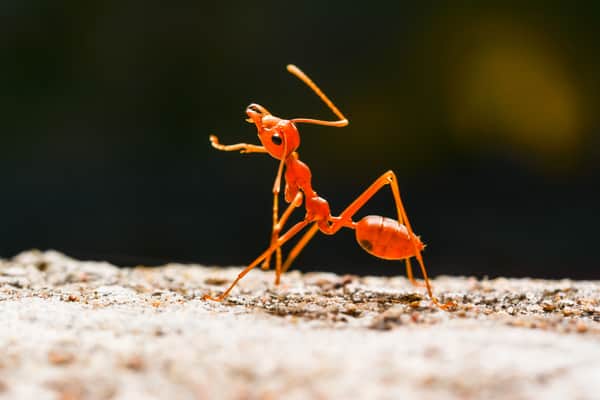 Let’s face it: Ant stings can be a real pain. Thankfully, only a small number of stinging ants pose a public health threat to humans due to their stings. Wondering if the ants invading your home are a pesky (and potentially dangerous) species of ant? Here are the different species of stinging ants that homeowners in the United States may encounter and the steps you can take to help keep them out of your home.
Let’s face it: Ant stings can be a real pain. Thankfully, only a small number of stinging ants pose a public health threat to humans due to their stings. Wondering if the ants invading your home are a pesky (and potentially dangerous) species of ant? Here are the different species of stinging ants that homeowners in the United States may encounter and the steps you can take to help keep them out of your home.FIRE ANT
Fire ants nest in almost any type of soil. Their repeated bites can cause nasty welts. Some people who have been stung by fire ants experience these itchy, pustules that may last for weeks. Some people may experience more extreme allergic reactions. Fire ants are typically found in the southeastern United States.
EUROPEAN FIRE ANT
During warmer months, European fire ants form their nests in gardens, lawns and shrubbery. This invasive species may create nests indoors during the cold months, particularly under bathtubs, water heaters or other warm areas with moisture. European fire ants are aggressive and can produce a painful sting when disturbed. They are common in the Northeast United States.
ASIAN NEEDLE ANT
Asian needle ants are considered a public health threat due to their venomous stings. While they are not aggressive, accidental stings may occur, as Asian needle ant colonies tend to be located in urban/suburban environments and wooded areas. They are primarily found in the Southeastern United States.
HARVESTER ANTS
There are many species of harvester ants, including the red harvester ant. Harvester ants like to form their nests in the soil in dry, desert-like conditions. While they are not aggressive, they do have a sharp sting. Harvester ants can be found across the southwestern United States.
PAVEMENT ANT
Pavement ant nests are found primarily under bricks and in crevices where sidewalk sections are joined, hence the name “pavement ants.” While they do have stingers, they rarely cause problems for humans. It’s interesting to note that pavement ants have been found to destroy fire ant nests. They can be found in all regions of the United States.
HOW TO TREAT ANT STINGS
For most people, ant stings won't cause any trouble besides some pain that will soon go away. However, others may experience allergic reactions. Should you experience allergic reactions to an ant sting, including severe reactions, you should seek medical attention immediately. The Mayo Clinic has more information about insect bites and stings.
HOW TO HELP KEEP ANTS OUT OF YOUR HOME
Ants of all varieties can enter your home through even the tiniest cracks, entering in search of water and sweet or greasy foods in your kitchen or pantry. To minimize the potential for ant infestations in your home, seal around your windows and doors, and around all cable, pipe and electrical wire entry points. A clean household will help as well. Keep foods sealed, floors swept and surfaces clean at all times.
Are you concerned about ants in your home? Contact Terminix® for help. Our experienced technicians can inspect your home and determine which species of ant you're dealing with and the best solution to get rid of them and keep them from coming back. Additionally, a Terminix pest control plan covers more than just ants.




